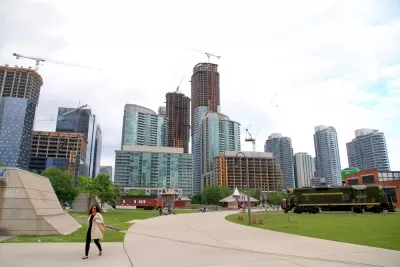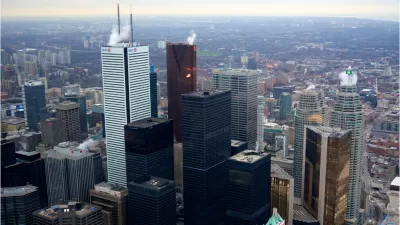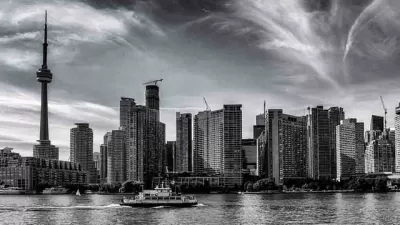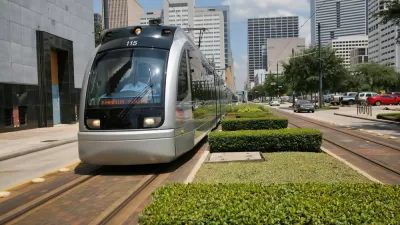It's hard to imagine a policy that so comprehensively acts to create disincentives for sprawl gaining political traction anywhere in the United States.

[Updated 5/23/2016] "With 3.5 million people set to move into the Greater Toronto and Hamilton Area over the next 25 years, the province is promising sweeping changes to manage smart growth and curb urban sprawl that’s crippling the region," according to an article by San Grewal.
Ontario Finance Minister Charles Sousa was joined by three other ministers to announce the "broad new measures the province is taking to properly manage future growth," according to Grewal. Sousa called the growth management strategy historic. The growth strategy is still only a proposal, regardless. "Many of the bold changes which will be reviewed until the end of September, before they can be incorporated into existing legislation," explains Grewal.
Among the proposed changes:
- Dense "pre-zoning" requirements along transit corridors.
- Requiring infill to comprise 60 percent of new residential development
- Increased commercial density to lessen the development of greenfield employment centers.
The article also includes a poll asking for reader's opinions of sprawl. The overwhelming majority of respondents say "it’s about time" the provincial government did something about sprawl.
Mississauga Mayor Bonnie Crombie produced a press release coinciding with the announcement of the growth strategy. The press release describes in more detail the process that produced the growth plan, as well as unequivocally voicing support for planning as the solution to the growth challenges facing the region.
[The post was updated to give proper credit to the current mayor of Mississauga.]
FULL STORY: Ontario setting new rules to end era of suburban sprawl across GTA

Trump Administration Could Effectively End Housing Voucher Program
Federal officials are eyeing major cuts to the Section 8 program that helps millions of low-income households pay rent.

Planetizen Federal Action Tracker
A weekly monitor of how Trump’s orders and actions are impacting planners and planning in America.

Ken Jennings Launches Transit Web Series
The Jeopardy champ wants you to ride public transit.

USDOT Waters Down Self-Driving Car Regulations
The agency is reducing reporting requirements for autonomous vehicles and cars with self-driving features, prompting concern among safety advocates who say transparency is essential to the safe deployment of AV technology.

‘Minnesota Nice’ Isn’t so Nice When You Can’t Find a Place to Live
The Economic Development and Housing Challenge Program can help address the scourge of homelessness among Indigenous people.

NYC Open Streets Organizers Call for City Support
The number of open streets projects has dropped year after year as volunteer groups struggle to fund and staff them.
Urban Design for Planners 1: Software Tools
This six-course series explores essential urban design concepts using open source software and equips planners with the tools they need to participate fully in the urban design process.
Planning for Universal Design
Learn the tools for implementing Universal Design in planning regulations.
Heyer Gruel & Associates PA
Ada County Highway District
Institute for Housing and Urban Development Studies (IHS)
City of Grandview
Harvard GSD Executive Education
Toledo-Lucas County Plan Commissions
Salt Lake City
NYU Wagner Graduate School of Public Service





























